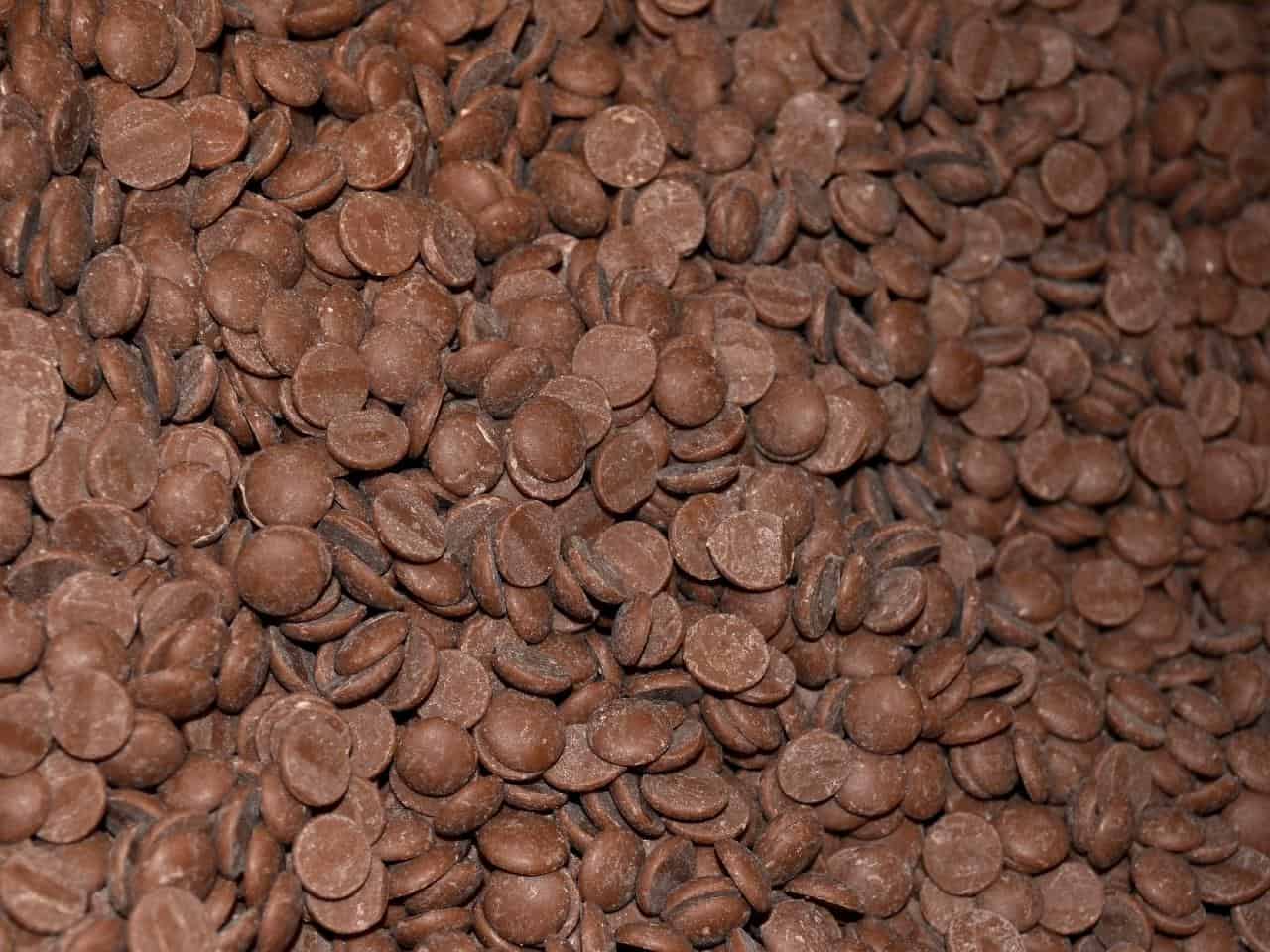Nobody can ever resist chocolate! Chocolate is the star of many recipes. Be it sweet, semi-sweet, or bittersweet, chocolate can change the game of any item. It can make it denser, richer, and definitely gooier.
When it comes to bittersweet chocolate, it is known to add stronger flavor and smoother texture to any food item. However, what to do if you run out of bittersweet chocolate or just don’t enjoy the taste? You can go for its near substitutes!
The best substitutes for bittersweet chocolate are semi-sweet chocolate, unsweetened chocolate with some sugar, or some of the following substitutes.
They can all help in getting the same rich texture and composition. To know more about how to use bittersweet chocolate substitutes, read on!
Bittersweet Chocolate Substitutes
Bittersweet chocolate has a very strong chocolate flavor with a slight sweetness. Hence, it may get hard to find the ideal substitute that can maintain the balance between the chocolate’s bitterness and sweetness.
Yet, I found that the below-mentioned substitutes give almost the same flavor and texture as that of bittersweet chocolate.
1. Semi-sweet chocolate
A bar of semi-sweet chocolate is your safest bet for substituting bittersweet chocolate in any recipe. The cacao content in both semi-sweet and bittersweet chocolate is almost the same.
Semi-sweet has 60% cacao content while bittersweet has 70% cacao content. So, you can expect the same rich chocolate flavor with semi-sweet chocolate as well.
Semi-sweet chocolate is also an excellent substitute if you want your chocolate desserts to taste a bit sweeter. However, note that at times even semi-sweet chocolate is bitter than bittersweet!
You can replace one pound of bittersweet chocolate with about one ounce of semi-sweet chocolate. So, the ratio remains pretty much the same.
Semi-sweet chocolate works well with brownies and cookies. But to obtain a denser texture and flavor like bittersweet, you can add cocoa powder or unsweetened chocolate to the mixture too!
2. Unsweetened chocolate with sugar
If you’re searching for a flavorful alternative that can match the intensity of bittersweet chocolate, then unsweetened chocolate is suitable for you!
Unsweetened chocolates have a 100% cacao content in them which makes them just the right substitute for chocolate lovers. The texture isn’t that rich but it still works with certain desserts.
However, as it is unsweetened, the sugar content is really low. So, you need to add a lot of sugar to remove some of its bitterness. You also need to take slightly less chocolate here due to its high cacao content.
For example, you can substitute 2/3rd ounces of unsweetened chocolate with 2 teaspoons of sugar in place of bittersweet chocolate. Unsweetened chocolate works well in recipes such as brownies, mousses, and chocolate cakes.
3. Cocoa powder with butter and sugar
If you don’t have any chocolate bars to replace bittersweet chocolate, then I recommend opting for cocoa powder. Cocoa powder is rich in chocolate and can add richness and flavor to any chocolate recipe.
However, unlike chocolate bars, the cocoa powder doesn’t have a lot of cocoa butter.
It has only 10-12% cocoa butter while bittersweet chocolate has around 55%. This affects the texture and consistency of your recipe, so you need to make some modifications here.
Instead of just using cocoa powder, you need to replace 1 ounce of bittersweet chocolate with 1 tablespoon cocoa powder, 1 tablespoon sugar, and 2 teaspoons butter. This will give your recipe the much-needed consistency and texture as that of bittersweet chocolate!
Cocoa powder works well with chocolate cakes, drinks, ice cream, and biscuits. However, if you require a dense and fudgy texture as seen in brownies, opt for other substitutes.
4. Semi-sweet chocolate chips
If you don’t have a semi-sweet chocolate bar, semi-sweet chocolate chips can work quite well too! They’ve almost the same rich taste and texture as that of a semi-sweet chocolate bar. So, you can easily use it in place of bittersweet chocolate.
However, you need to use semi-sweet chocolate chips in higher quantities to maintain the dense texture of bittersweet chocolate.
So for one ounce of bittersweet chocolate, opt for 3 tablespoons of semi-sweet chocolate chips and you’re good to go!
5. Milk chocolate
Milk chocolate is readily available almost everywhere. It’s also common in bakery items due to its lovely taste and texture. So, you can use it as a bittersweet chocolate substitute by making some modifications.
It has a creamier texture and sweeter taste compared to bittersweet chocolate. Meaning, you may have to add 1-2 tablespoons of cocoa powder along with the milk chocolate. This may help in achieving the slight bitterness of bittersweet chocolate.
However, keep in mind that milk chocolate won’t give out the same texture and chocolate flavor as that of bittersweet or semisweet.
6. Carob powder (non-chocolate alternative)
Carob powder is the ideal bittersweet chocolate alternative for those who have sworn off chocolates! Thus, if you’re not really a chocolate fan or chocolate gives you headaches, then go for carob powder.
Carob powder comes from dried, roasted carob tree pods. It is like a chocolate powder but sweeter in taste with caramel undertones which will make your dish taste beyond unique!
Whenever you’re substituting bittersweet chocolate with carob powder, make sure you add 1 tablespoon of any neutral-flavored oil with 3 tablespoons of carob powder. This will help you achieve the dense and rich texture in cakes, drinks, bread, and many more food items.
Substitution Table for Bittersweet Chocolate
Different varieties of chocolates can substitute bittersweet easily as long as you know how to do it. Given below is a quick table for substitution of 1 ounce bittersweet chocolate.
| Substitute | How Much to Use? (Per one ounce of bittersweet chocolate) |
| Semi-sweet chocolate | 1-ounce semi-sweet chocolate |
| Unsweetened chocolate | 2/3rd ounce + 2 teaspoons sugar |
| Cocoa powder | 1 tablespoon cocoa powder + 1 tablespoon sugar + 2 teaspoons butter |
| Semi-sweet chocolate chips | 3 tablespoons |
| Milk Chocolate | 1-ounce milk chocolate + 2 tablespoons cocoa powder |
| Carob Powder | 3 tablespoons carob powder + 1 tablespoon oil |
Related Questions
Is bittersweet chocolate the same as unsweetened chocolate?
No, bittersweet chocolate isn’t the same as unsweetened chocolate. As the name suggests unsweetened chocolate has no sugar content with up to 99% cacao content. On the other hand, bittersweet chocolate has 10% to 50% sugar content with up to 70% cacao content.
Apart from that, bittersweet chocolate also has a rich and flavorful texture. Unsweetened chocolate, on the other hand, is more crumbly.
Can I substitute chocolate chips for bittersweet chocolate?
Yes, you can substitute chocolate chips for bittersweet chocolate. They have the proper texture and taste to replace bittersweet chocolate. So, for 1 ounce of bittersweet, go for 3 tablespoons of semi-sweet chocolate chips.
How do you make bittersweet chocolate?
In factories, the cocoa beans are ground into a liquid form to make bittersweet chocolate. Hence, bittersweet chocolate contains up to 70% cacao content.
If you want to make bittersweet chocolate, you can make use of 1 ounce of unsweetened chocolate with 2 teaspoons of sugar. If you want more sweetness, you can add extra sugar to it.
Can I use dark chocolate instead of bittersweet?
Dark chocolate is basically a type of bittersweet chocolate. Both of them have a cacao content of over 70%. So, you can use them interchangeably.
How to substitute unsweetened chocolate for bittersweet?
You can substitute one ounce of unsweetened chocolate for one ounce of bittersweet by adding around two teaspoons of sugar to the unsweetened chocolate. The texture may remain slightly crumble instead of rich and dense though.
What percentage is bittersweet chocolate?
Bittersweet chocolate has around 70% cacao content in it.
Final Thoughts
Most chocolates can successfully substitute bittersweet chocolates very well if you make some adjustments.
Make sure that you consider the recipe and type of dish before using any product. For instance, unsweetened chocolate requires a lot of sugar so go for it only when the recipe has fewer sugar requirements.





